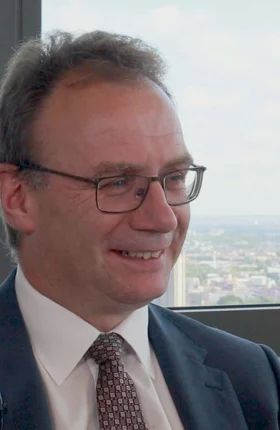Just as a brewery relies on its brewmaster to formulate new varieties of beer, Heineken relied on its IT department to create a new way of working for the Dutch company.
The company’s IT function, Global Information Services (GIS), was a good place to start embracing agile ways of working. The department faced challenges that included a rapidly accelerating pace of change inside and outside the organization, as well as the need to attract new hires with digital talents who might not consider a 150-year-old company an option when looking for technology jobs.
Heineken GIS Senior Director Ing Yan Ong and Luca Cutolo, who designed and managed Heineken GIS’ agile transformation, recently spoke with BCG about the company’s agile journey. Edited excerpts from the interview follow.
Ing Yan Ong, Senior Director, Global Information Services, Heineken
At a Glance
Benoordenhout, The Netherlands
Education
Master’s degree in industrial engineering and management, University of Twente
Postdoc for registered EDP auditor, Vrije Universiteit Amsterdam
Career Highlights
2013–2015 Regional IT Director, Heineken Europe
2008–2013 IT Manager, Heineken Netherlands
1999–2008 IT Audit Department Head, ABN AMRO Bank
1997–1999 Consultant, Oracle
Luca Cutolo, Director Global Technology Supply Chain, Heineken
At a Glance
Amsterdam, The Netherlands
Education
Master’s degree in transportation and business engineering, Tor Vergata University of Rome
Career Highlights
2018–2019 Director, Agile Transformation and Agile Office, Heineken GIS
2015–2018 IT Manager, mergers, acquisitions and divestments, and new ventures, Shell Upstream
2014–2015 Global Strategic and Digital Program Director, Shell Upstream
2010–2014 Lead Architect, Shell Upstream
Cutolo: Heineken is a company with a more-than-150-year history with a strong culture, and we wanted to bring something new. To make sure the agile transformation was seamless for the organization itself, but also for us who were running it, we needed to blend these two worlds.
Currently, I’m the GIS director for global technology in the supply chain. I joined Heineken in July 2018 as the agile transformation director. My job at the time was really to manage the design and lead the agile transformation process for GIS.
Ong: I’m the senior director for global information services. We actually started the agile transformation within GIS a couple of years ago when we recognized that we were increasingly dealing with a project portfolio that was expanding; technology was becoming much more relevant in Heineken. And actually, we were doing quite well at dealing with that expanding portfolio, but at the same time, we realized that the requirements and the speed of change were also tremendously increasing.
We started almost two years ago, when we very openly said to the entire department, “We are all moving to this agile way of working.” What we said was, let’s first give people the chance to learn and experience themselves what it means. We established two product teams; we had more than 80 experiments for people to learn and apply scrum and agile ways of working actually before we transformed into this agile organization.
We had quite a traditional setup also in our office, where many people had their own desks, had their own offices. And we said, as we are going to move freely to an open office, no fixed workplaces, you actually work with the people that you have to work with on that day. So, it became a very much more collaborative environment that catered to new ways of working.
Obviously, in a transformation like this there are quite some challenges. I’d say the first one was around the people, making sure we delivered on the services and projects we were committed to and, at the same time, equipping them for new ways of working. The second challenge that we had was, because we started in GIS, the IT department, finance, HR and several other processes we were quite dependent on had not changed. So, we had to cope with new ways of working within IT that were not yet supported by other supporting functions, like HR, finance, and legal.
Cutolo: To be successful in this strategy, we need to get the suppliers on board. And the only way possible that we foresaw at that time was to get them on board from day one. So, we created a lot of sessions and workshops with our suppliers. The combination of this open communication between us and our suppliers eventually made better contracts and a better way to measure the suppliers that has been implemented in the agile organization.
We are a large company, so we have to collaborate with what is called the work council. The work council is an internal governance body that is looking after the employees’ interests during a period of change. To get them on board from day one, we decided to apply agile principles to the way that we were collaborating with them. When it was time to implement the real transformation, there were no surprises.
Ong: The agile transformation has really helped GIS as a function both within and outside of Heineken. Within Heineken, because we started this agile transformation within GIS, other functions as well as operating companies are now coming to us, to learn from us but also to reuse a lot of the materials that we have. And that’s changing the perception of GIS as a function.
Outside of Heineken, what we see is the agile transformation and everything else we’re doing around digital and technology and innovation are really helping increase the attractiveness of GIS as a great place to work.






